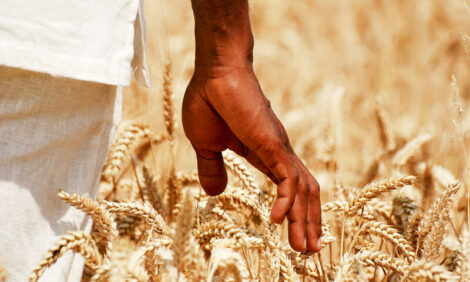



Will Consumers Come Back to Pork? Yes!
US - Per capita pork consumption in the US has declined sharply in the past several years due primarily to strong pork export growth, writes Chris Hurt.Per capita pork consumption in the US averaged 50.1 pounds in 2006 and 2007 when $2 per bushel corn was still the rule. That dropped to a low of 45.8 pounds by 2011, a nine per cent decrease.
Surprisingly, as US per capita consumption was dropping sharply, total US pork production grew by eight per cent from 2006/2007 to 2012. How could total pork production grow while domestic per capita consumption was falling sharply? The answer is that US pork exports expanded and now US consumers have new competition from foreign buyers for limited pork supplies. There is a saying, "China is going to eat your lunch," and that statement has some limited truth. China was the 6th largest buyer of pork from the US in 2006, representing five per cent of US exports, but moved to the third largest buyer by 2011 representing 15 per cent of US exports.
China’s recent history has exhibited an inconsistent pattern of buying pork in the world market. As recently as 2004 to 2006, China was a net exporter of pork, selling more to the world than they purchased from the rest of the world. Since 2007, however, they have been a net importer, but an inconsistent net importer. That inconsistency arises from them buying large amounts when they need pork, like in 2008 due to internal pork diseases and to the Olympics. They were large purchasers again in 2011 when pork price inflation was high and they needed to quickly increase internal pork supplies.
The future direction of pork exports to China remains unclear. The preference within China has been to raise their own pork and only buy from the world market when their internal production is short. They are rapidly increasing domestic production, so the race is on to see if they are able to increase domestic production as quickly as internal demand is rising.
China receives a lot of the media attention regarding US pork exports, but Japan remains the top buyer with a consistent 30 to 35 per cent of US exports. Mexico, with consistent growth, is in the second spot with 20 per cent of US exports in 2011.
While the US domestic pork market remains the largest industry segment, the most dramatic growth opportunities lie with consumers in foreign countries. Consumption has two potential growth components: population growth and increasing per capita consumption. Mexico is near the top of the growth opportunities. In the last decade, Mexico had average annual population growth of 1.6 per cent and per capita pork consumption growth of 2.5 per cent annually. Combining these two means total per capita pork consumption growth rates in Mexico averaging 4.1 per cent per year over the last decade. China’s annual growth rate in total per capita pork consumption has been 3.0 per cent, South Korea has been 2.6 per cent, and Japan has been 1.3 per cent. In contrast, the United States has had a growth rate near zero as a modest population expansion has been offset by declining per capita pork consumption.
To the advantage of the pork industry in the next several years, not only will pork exports stay strong, but US domestic per capita consumption is poised to recover as the pork industry expands production. That pork expansion will be brought on by strong profits which began in the spring of 2011 and by moderating feed prices. A third supporting force will be the very low levels of beef available into 2015.
The moderation to the downside in feed prices is still dependent on a return to normal yields in the US for 2012 crops. For that reason, the pork industry should still view 2012 as a transition year to those more moderate feed prices that still depends on rebuilding corn and soybean inventories with more normal yields.
Limited competition from beef in the meat case however is now "locked-in" for several years. The current small beef cow numbers means small calf crops for several years, and the retention of heifers as expansion begins means small beef supplies until at least 2015. The pork industry is well positioned to quickly take advantage of this uptick in market opportunity that is beginning to present itself.
In the next several years, the pork industry will benefit from strong growth in foreign per capita consumption and from some expansion in domestic per capita consumption as well.






